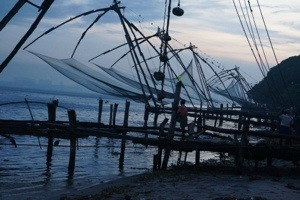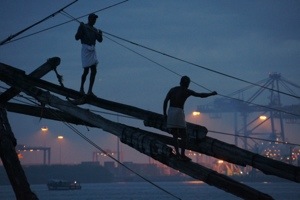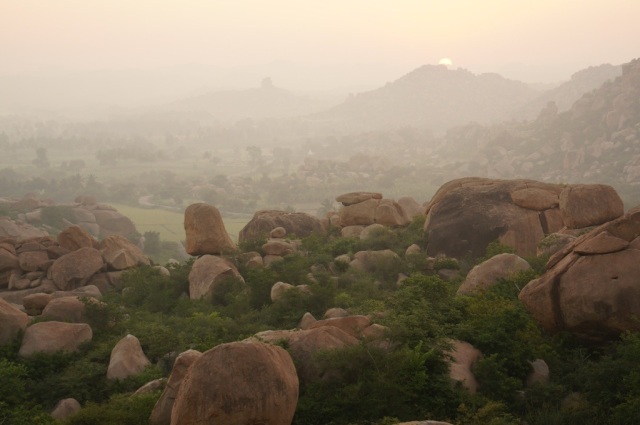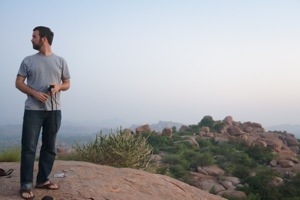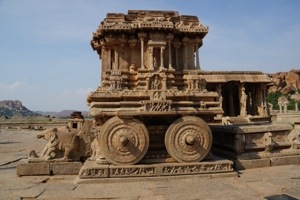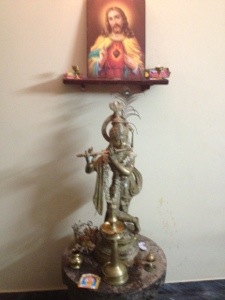
Right this minute I’m looking at a couple dozen men from a small beach village about 15 miles north of Trevandrum, Kerala, India, working to fill their nets with fish. It’s been raining, a post-monsoon storm pattern, so the sea is rough, the surf high. Working from the beach looks complicated. A group of men stand on the beach with ropes. taking direction from a couple of others in the water who keep the net straight and in position to catch fish. Earlier an ancient looking boat was launched from the beach through the surf to take the nets out further. Groups of men, perhaps extended families, line this straight beach as far as I can see in both direction, each moving with the tide and leaving at least 100 yards between the next fishing group. Yesterday morning I observed the catch and it was all small silver fish, maybe sardines. Today, it looks like the catch is better. The fishermen yell and accompany the hard pull of the net with chants. After the catch is sorted, they give another series of shouts to let people know they have fish for sale. Tonight we may be the beneficiaries of today’s catch.
In another Kerala scene, not too far from here, a lithe man wearing his traditional dhoti (what is called a sarong in other tropical places) shinnies up a tall coconut tree to reap a harvest. Later a machete will trim the husk and drain the precious milk from the coconut. A cook will take the meat and grate it. In time, the milk and meat will form the base of many recipes. Tonight we may be the beneficiaries of this harvest.
Another group picks spices. It could be a root like ginger. It could be berries like pepper. It could be leaves like curry. Women clean the waste from the potent spice, or let the spice dry in the sun. Tonight a combination of these spices will join the other ingredients at just the right time to bring out the full flavor of each, fish, coconut. Kerala cuisine is richly spicy, favoring the hot influences of chili, black pepper, cardamom, cloves, ginger, and cinnamon. And don’t forget garlic, cumin seeds, coriander, and turmeric.
There are also various round breads made from wheat flour to dip into the rich sauces and curries. More often, you use your fingers to dip rice into the curry, rice grown in the fields along the fresh backwaters near the sea, wide swaths of that intense green that require great care to produce a good crop. As well, cassava (tapioca) is a seasonal favorite, served the same way as rice.
We are the beneficiaries of all this fresh local food, picked with heart and served graciously. Thank you, Kerala, for your bounty. To follow are photos of boats and fishing and a variety of nets ranging from the great Chinese nets, lever action, to the more basic beach nets. We have rice harvests, ginger drying, markets, and pictures of food and eating. We are nearing the end of our journey.










